AppleInsider · Kasper's Automated Slave
About
- Username
- AppleInsider
- Joined
- Visits
- 52
- Last Active
- Roles
- administrator
- Points
- 10,963
- Badges
- 1
- Posts
- 66,634
Reactions
-
New Matter 1.4 spec supports more device types & improvements for Apple Home
The Connectivity Standards Alliance has finalized the Matter 1.4 spec, releasing it to accessory makers and platforms like Apple Home with several new device types and improvements.
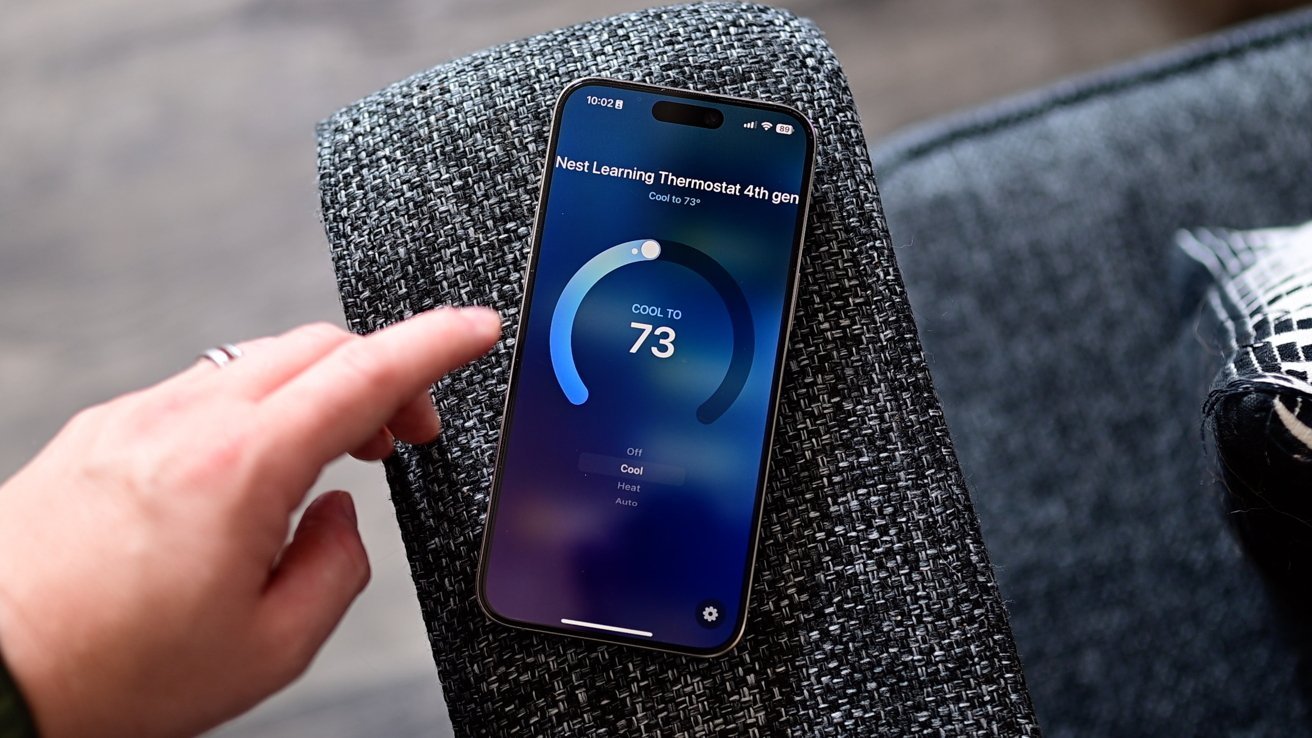
Matter continues to improve with its latest update
The Connectivity Standards Alliance (CSA) is the governing body that develops the Matter spec. It's a member-led organization that is made up of Apple, Google, Samsung, and countless others.
Matter is intended to be the unifying standard, allowing products to work seamlessly across multiple platforms such as Apple Home -- formerly HomeKit, Samsung SmartThings, Amazon Alexa, Google Home, and more.
So far, the CSA has been on a bi-annual release cadence, updating the spec twice a year with additional features and improvements. We got the Matter 1.2 update in October 2023 and Matter 1.3 in May 2024.What's new in Matter 1.4
New in Matter 1.4 is support for home routers and access points, generally referred to as HRAP. This allows HRAP devices to not only be controllable via Matter apps, but ensures that they will play nicely with Matter accessories.
Any Matter HRAP device will act as a Wi-Fi access point and a Thread border router. They also will help sharing Thread network credentials.
The 1.4 update makes it easier for devices to be added to multiple ecosystems, such as a smart light that you can control with a HomePod and a Google Nest smart speaker. They can now be added to multiple ecosystems automatically.
Finally, there's a big push for energy management. New devices and features include:- Solar power inverters, hybrid solar systems, and solar panel arrays
- Battery walls, battery storage cells, and Battery Energy Storage Systems (BESS) that feed back into the grid
- Heat pumps
- Water heaters
- Scheduling for EV chargers
- Scheduling and preset modes for thermostats
- New in-wall devices that deliver power to wired devices like lights and fans
Matter 1.4 availability
It's unclear when new devices or ecosystems supporting Matter 1.4 will arrive. Technically, Apple still hasn't added support for Matter 1.2 yet.
As it does every year, the annual Consumer Electronics Show is coming in January but that seems early for new devices to be launched. Since the spec was just finalized, that doesn't leave accessory makers or ecosystem developers much time.
It may not be until 2026 that compatible devices ship. Rumors have pointed to Apple making a big push into the smart space in 2025.
Read on AppleInsider


-
Generation gaps: How much faster Apple Silicon gets with each release
Apple Silicon speed has steadily improved since the debut in 2020. Here's how much faster Apple has made its chips in just four years.
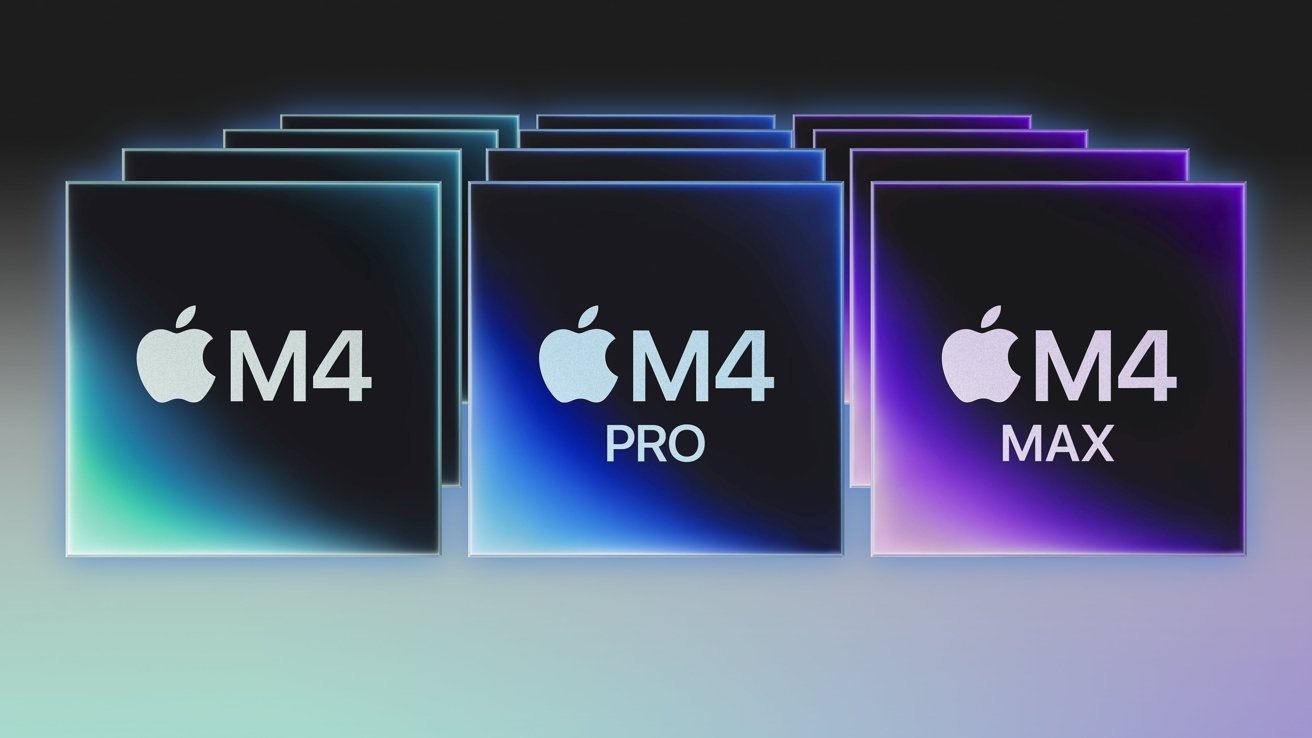
M4 is Apple's latest chips - Image credit: Apple
Chip generations tend to improve with age. As designs get better and production processes squeeze more onto a smaller space, the performance of chips get better over time.
This is also true of Apple Silicon, Apple's self-designed chips used in its Mac lineup, as well as the iPad Pro and iPad Air. The replacement of Intel's chips has proven itself repeatedly to have been a great move for Apple, with the improvements impressing customers and resulting in more buyers.
Now, as the fourth generation of Apple Silicon ships in the form of the M4 series, we have three generational jumps to analyze. We can see more accurately how Apple's chip lineup has improved since the M1 first launched in November 2020.Apple Silicon Chip comparisons
When performing this comparison, we are using the Geekbench results listings as our base. Using the latest results eliminates any version changes in the benchmark, so the results should all be on a fair footing.
There are some other issues to consider when using this approach, such as chip releases with core count options. There are also differences between a MacBook Pro and a Mac Studio, for example, which can affect the thermal management and therefore the results.
There are other factors too, including the production process providing improvements with die shrinks, as well as memory bandwidth upgrades.
To save splitting hairs, we are only using the top result for each chip in each category, to give it the highest potential score.
When it comes to the M4, Geekbench's Mac results list doesn't have any figures. However, you can search for the models of Mac in its database and fish out results.
For M4 models, we averaged out figures that seemed plausible, to try and root out any false or heavily errant results.Single-core changes in Apple Silicon
Of the three benchmark results, the single-core testing offers the least variance between models. This consistency is pretty much down to how Apple produces versions of its chips.
A chip maker like Intel could differentiate between chip variants in a generation by modifying multiple factors, including core clock speeds and the number of cores. Apple tends to keep the clock speeds pretty similar across a generation, but it still has the option to change the core counts.
Each Apple Silicon chip could have different core splits between performance cores and efficiency cores. But since we know the speed of each core type will be pretty comparable, there's not going to be much difference between an M1 and an M1 Max here.
Also, when performing a single-core test in Geekbench, the performance cores are the ones that tend to be used.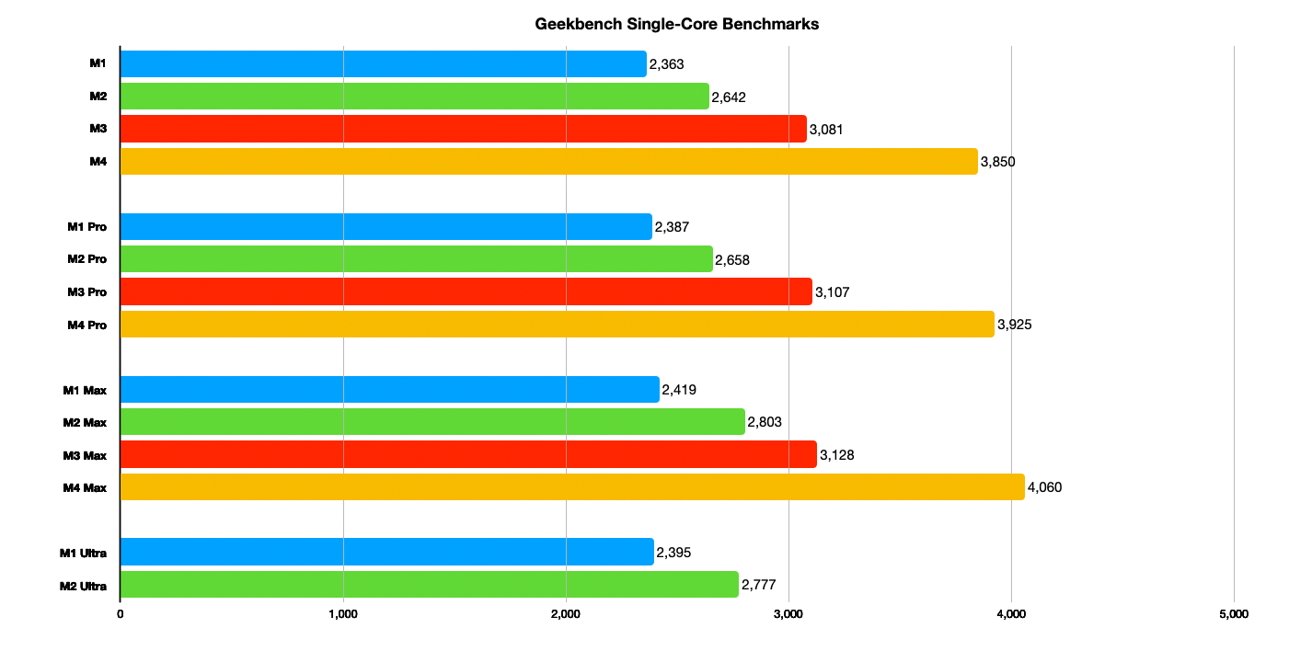
Geekbench single-core benchmarks
When compared by percentage change from the M1 version, we see pretty similar results for each of the base, Pro, and Max chips.
The M2 generation is between 11% and 16% better than the M1 for single-core results. The M3 is between 29% and 20% better, while the M4 is between 63% and 68% better.
For the two Ultra chips, the M2 Ultra is 16% better than the M1 Ultra in single-core testing.
What this comparison shows is that Apple's upgrades are quite consistent across a generation when it comes to single-core comparisons. It also demonstrates that there is a fairly sizable performance boost evident in each generation.Multi-core changes in Apple Silicon
While single-core was fairly straightforward to understand, things get a bit tougher when it comes to the multi-core scores.
The problem here is that prefix "Multi," in that it means all of the chips on a CPU are put under load. With more cores, a chip can score higher.
However, Apple hasn't been entirely consistent in the way it distributes its performance and efficiency cores.
On the lowest 8-core CPUs, it usually splits them evenly, with four each in use. On a more powerful Max chip, such as the M3 Max, it could have a small collection of four efficiency cores, but then fill out the other 12 spots with performance cores.
The inconsistency comes in with the M3 Pro generation. A 12-core M3 Pro is configured with six efficiency cores and six performance cores.
This is odd, since the 8-core M3 and the 16-core M3 Max both have four efficiency cores and the remainder are performance cores. The even split means the M3 Pro doesn't have as much CPU number-crunching performance in multi-core testing than it normally would.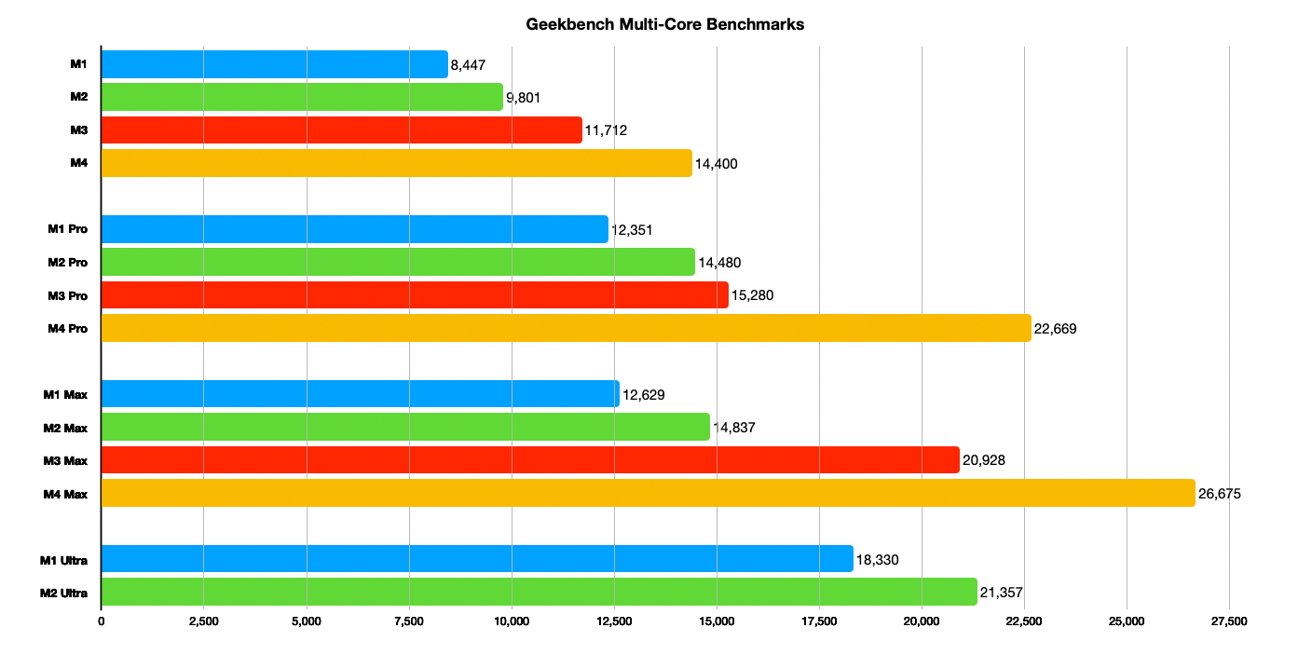
Geekbench multi-core benchmarks
Examining the figures, the addition of lots of cores makes the differences more pronounced, as a percentage. The M2 generation is generally 16% to 17% better than the M1 in multi-core testing.
For the M3 generation, the M3 is 39% better than the M1 and the M3 Max is 66% better, but the M3 Pro is only 24% better. Again, the M3 Pro is an anomaly for Apple Silicon.
M4 is, again, considerably better, reaching 70% better than M1 for the base level, 84% better for the Pros, and 111% better for the Max chips.
Again, the M2 Ultra is 17% better than the M1 Ultra.GPU changes in Apple Silicon
When it comes to graphical performance, we turn to the Metal test results in Geekbench. Much like how multi-core performance is based on clock speed and core counts, the GPU performance relies on the same things.
However, the core counts of GPUs can grow by a considerable number, depending on the variant.
For example, the humble base M1 has at most an 8-core GPU, the M1 Pro has a 16-core GPU, the Max has a 32-core version, and the Ultra up to 64 cores.
Likewise, M4 starts with 10 cores for the GPU, rising up to 20 cores at most for the Pro, and a maximum 40-core GPU on the M4 Pro.
Clock speeds and other graphical improvements can also impact results.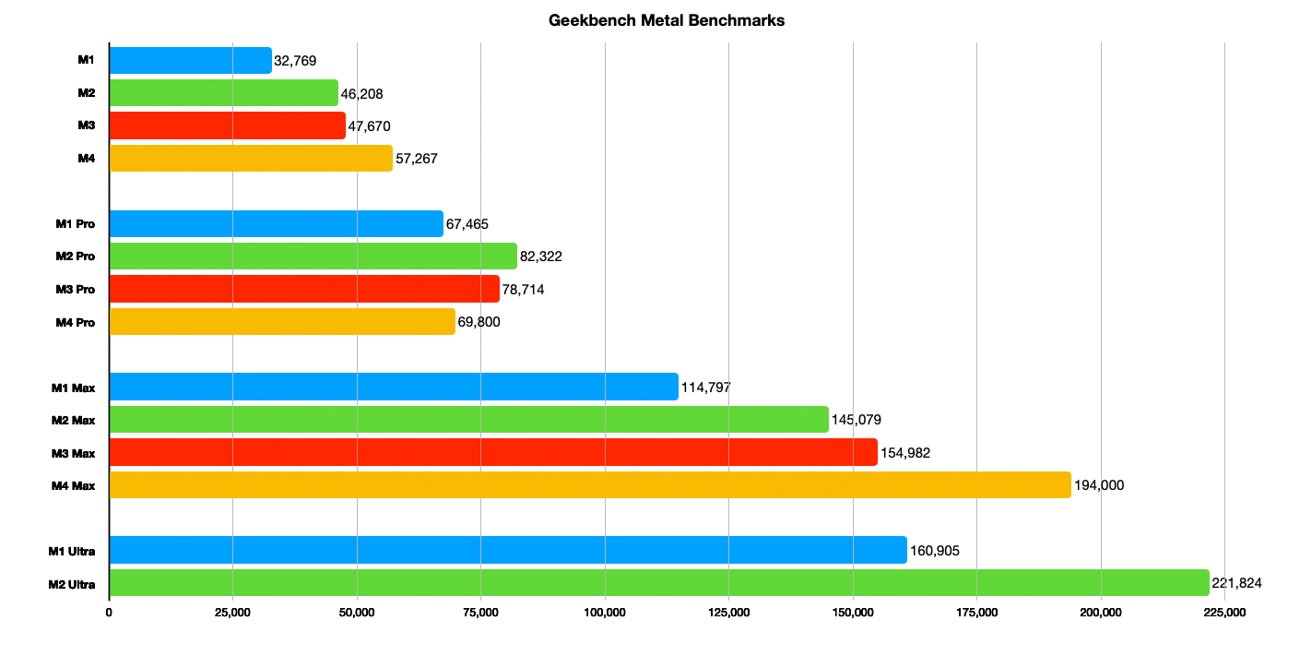
Geekbench Metal benchmarks
Comparing the results against the M1 counterparts, the Geekbench figures say the M2 is 41% better than the M1, the M3 is 45% better, and the M4 is 75% more powerful than the original.
For Pro models, there's a 22% improvement from M1 to M2, but the improvement seemingly dips to 17% for the M3 over the M1. Oddly the M4 Pro's GPU is only 3% better than the M1, at least according to the results.
This seems to be an oddity with Geekbench's results listings at some point, as they should be a lot higher. Since the results are updated regularly, it's possible that these figures could correct themselves within days.
At the Max end, things pretty much return to normal. The M2 Max's GPU is 26% better than the M1 Max, the M3 Max is 35% faster than the M1 Max, and the M4 Max is 69% better.
On the Ultra chips, the M2 Ultra's GPU is 38% better than the M1 Ultra's version.Consistent improvements
Each time Apple introduces a new generation of Apple Silicon, it's promoted as the best version yet. Faster cores, more cores, and better graphics each year.
It's clear from the Geekbench listings that Apple is keeping up with its promise.
At least, if you ignore the oddities that are the M3 Pro's CPU core split and the Pro model GPU results. The former is explainable as Apple's decision, the latter is more likely to be a results problem rather than an Apple issue.
What is certainly understandable is that Apple is making a considerable improvement in each generation of its chips, regardless of the variant.
We can expect that, when M5 eventually arrives, it will be about 20% better than the current M4 chips. That is, if you base the results against what each chip generation brings versus the previous in these figures.
Apple could go wild and offer something completely different in the next generation. More cores, different performance-efficiency core splits, new GPU ideas, can all make a difference to performance.
It could do that, or it could stick to its more gradual improvements. Either way, whatever comes next should be Apple's best yet. As usual.
Read on AppleInsider
-
Why free VPNs aren't always safe to use
A VPN is meant to protect you and your data, but that's not always the case when it comes to free services. Here's why you should be wary of no-cost VPN services.
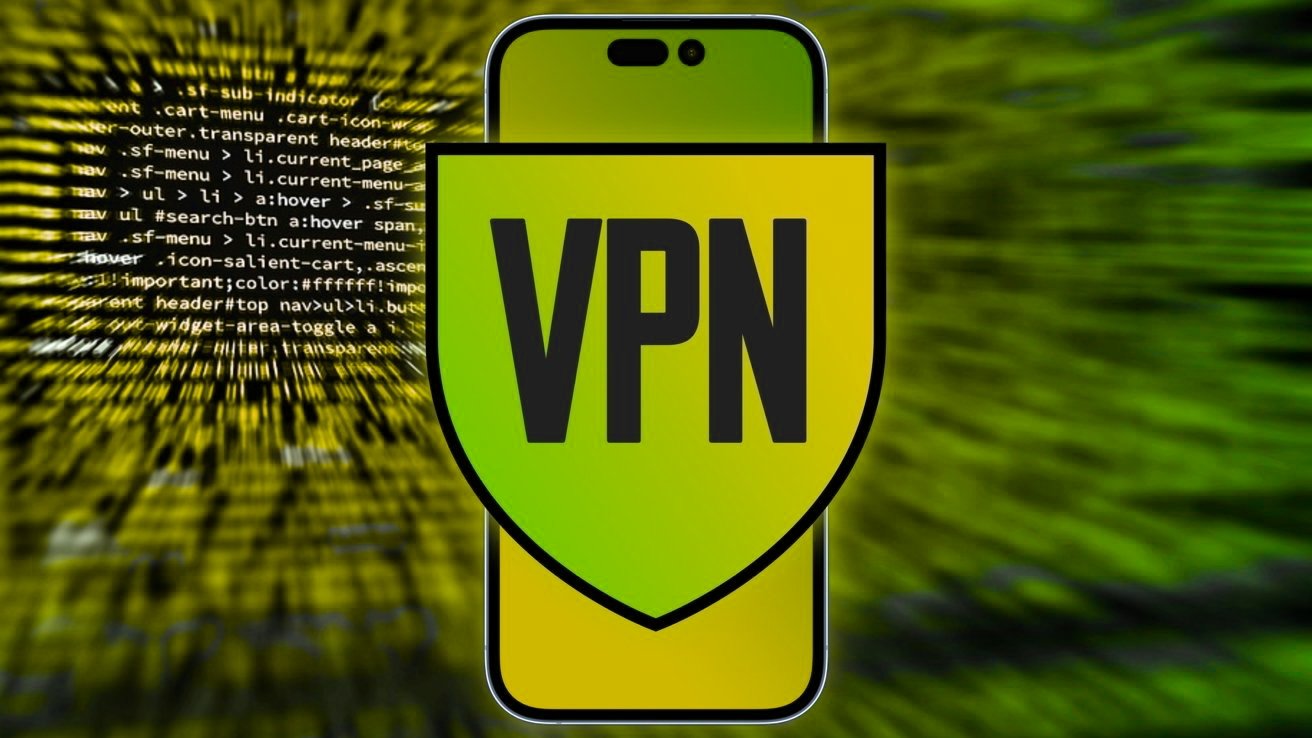
VPNs are available for the iPhone and other hardware
Paying for a Virtual Private Network (VPN) service offers users many benefits, including encrypting their online web traffic. Keeping your sensitive data private is its primary function, and in the vast majority of cases, that's how they operate.
However, alongside the trustworthy paid-for services, people who want to use a VPN without signing up for a subscription have another option. They can instead use a free VPN service.
This doesn't necessarily sound like a bad deal for users. It's seemingly all of the benefits of a VPN, including tunneling through nodes in other countries to get past geo-limitations on content.
However, while free is a great price, it certainly doesn't mean that you'll get a good service. In some cases, it actually does more harm than good, and for multiple reasons.Weak encryption
Many of the top subscription VPNs for Mac and iPhones boast about having high standards for their encryption. Using top-tier encryption that regularly gets checked and tested, paid services do a lot to assure clients that their data is safe.
However, the better the encryption, the more expensive it is to implement and to run. For a free VPN which doesn't necessarily have the cash reserves to do this, they simply cannot.
Instead, the free VPNs end up using older protocols. A common one is PPTP (Point-to-Point Tunneling Protocol), which isn't exactly the most secure method to use online anymore.
Weak protocols are more easily broken by a determined attacker, which means your traffic is at risk.Data logging
Another reason not to use free VPN services is due to the way they can earn revenue. To offset your use of their services, they have to use whatever data they collect to recoup the cost.
This typically means that your activity is logged. While your actual connection could be private from prying eyes, the service could be collecting your browsing history and other personal information that it can detect.
This data is then sold off to data brokers, which is then used to build profiles that online marketers can use to target advertising to you. It's even collected and used by government agencies.
This is pretty much how Google earns revenue while providing many free online services, and practically everyone is aware that this happens. The difference is that you wouldn't expect a service like a VPN to actively collect and share your data when it's meant to keep your online browsing private.
As usual, if you're using a free service online, you are often the real product.
Paid VPN services often point out that they do not collect data on their users in this way. Not just because they don't work with data brokers, but because of privacy risks.
If a VPN collected data on your browsing habits and stored it, that data cache becomes a potential target for hackers.Page insertions and ad hijinks
A VPN service with lesser-quality encryption and data logging capabilities could go one stage further to recoup its revenue. They could interfere with the web traffic itself.
This doesn't mean large-scale tampering with web search results and the website content you want to view. Really, a free VPN may slip in some extra elements to pages, or as popups, so that you can be served advertising.
These ads would earn revenue for the free VPN service itself, not the website that the ad has been inserted into. It's also plausible that the real advertising on a website could be replaced when using some unscrupulous free VPN services.
In the latter case, this would be denying the website you're reading some advertising revenue.
This is actually a bigger problem than you may think, beyond being served more ads. It's possible for those ads to be serving malware directly to the browser, since they're being added through lesser ad networks that are less safe and secure than traditional ones.Malicious VPN apps
The worst problem with free VPNs is if you pick one that is actively malicious. Accessing a free VPN is a big carrot a hacker could dangle to catch unsuspecting victims who are all too willing to install the VPN app.
That app could contain malware, hidden away so that it can be installed without your knowledge. That malware could, at its worst, collect and send off your data or infect the system it's installed on.
Well-known and paid-for VPNs obviously don't have that problem, since it would severely harm their reputation. A barely-heard-of free VPN doesn't have that to lose.Not all VPNs
The issues outlined above are common problems for free VPN services, but not all of them have these issues. Aside from paid services with better security and encryption levels, you can still find some free services out there that are safe to use.
Some free services are actually freemium, referring to paid services that offer free tiers of usage. While limited in various ways, such as in server selection or speed, they often offer the same sort of security as the paid version.
One considerable exception in the free VPN world is ProtonVPN, the service from the same people who made ProtonMail. While the free options limit what servers you can use, it does still use excellent encryption and has a strict no-logs policy.
If you only need a VPN for occasional tasks and you're not quite ready to pay for a full-blown VPN, ProtonVPN is a decent option for free protection. You can also find discounted prices on paid VPN services with the best VPN deals.
Read on AppleInsider
-
Apple's Magic Mouse charging port design has never been a big deal
The newly updated Apple Magic Mouse now has a USB-C charging port, but it's still on the bottom -- and that still doesn't matter.
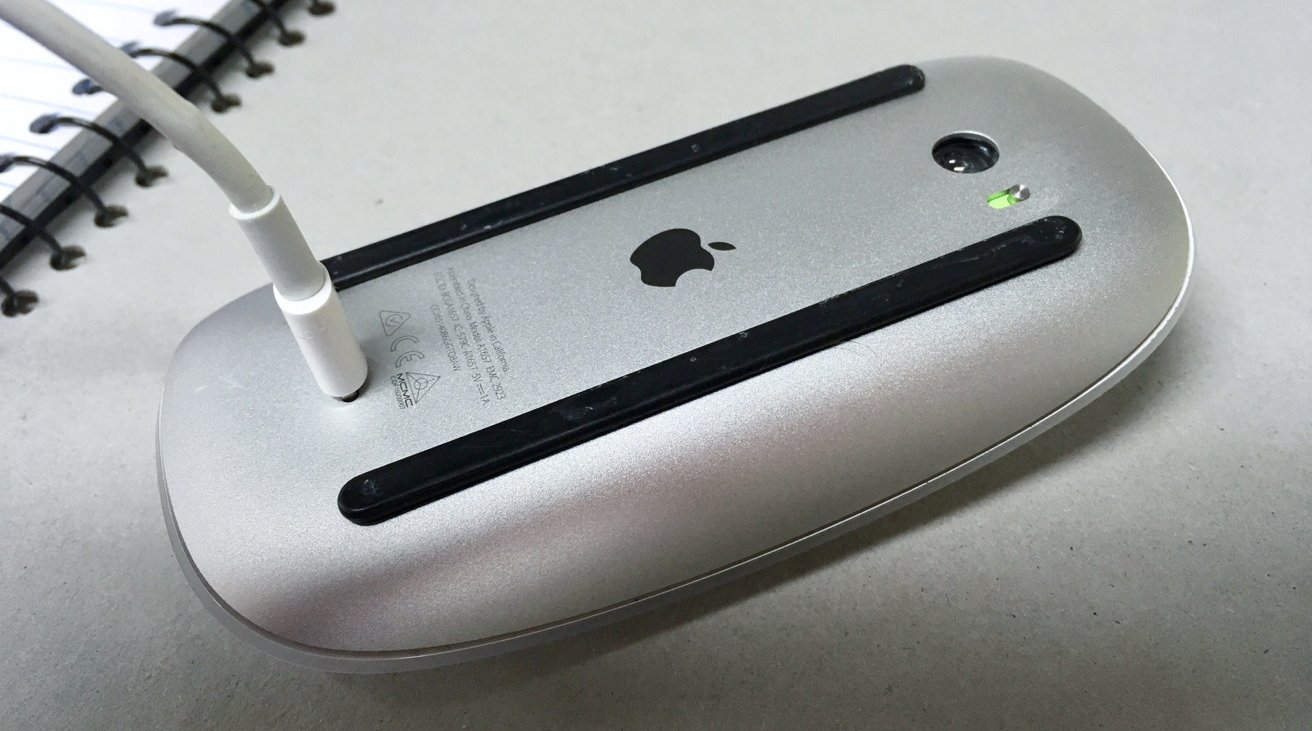
Since 2015, you've charged the Magic Mouse through a port on its base
It's nine years since the Magic Mouse was first redesigned to be rechargeable instead of having removable batteries. And at the time, Apple's design and attention to detail were commended -- for the sound of the mouse.
From that day to this, though, the Magic Mouse design has been criticized and mocked for how apparently appalling it is that the charging port is on the bottom. It is seemingly an existential threat to mankind that you have to turn the mouse over for a minute.
Because that's the thing. It's a minute. If the mouse battery is so low that you cannot use it, just sticking that cable into the port for a minute or two will get it going again.
Go have a coffee and when you're back, the mouse will have been charged up enough to use for at least, at the very least, the rest of the day. Then leave it charging overnight and you can forget all of this for at least a month.
And that's the other thing. A month. The charge lasts for at least a month.
It does of course depend on how much you use the Magic Mouse. So maybe you are a very heavy user of it, maybe your work is genuinely so time-critical that you literally cannot spare two minutes to charge the mouse up.
If that's the case, the port on the bottom could be genuinely bad and inconvenient -- except for one thing.
The Magic Mouse battery does not die suddenly or quietly. If you are complaining that it's died just when you were on an absolutely crucial job, it's your fault for ignoring all the low battery warnings you have been getting for days and days.
Having that charging point on the bottom is not Apple's disastrously bad design, it's trivial. Keeping it on the bottom after changing the port is a shrug -- and USB-C might even speed up charging
Now, the iMac hockey-puck mouse, that really was Apple design at its worst.
Read on AppleInsider

-
Is Apple Vision Pro a 'first year flop' or tomorrow, today?
Critics are, as they do, having a field day preannouncing Apple's purported plans to "cancel" or "discontinue" the first iteration of its Apple Vision Pro Spatial Computing platform.
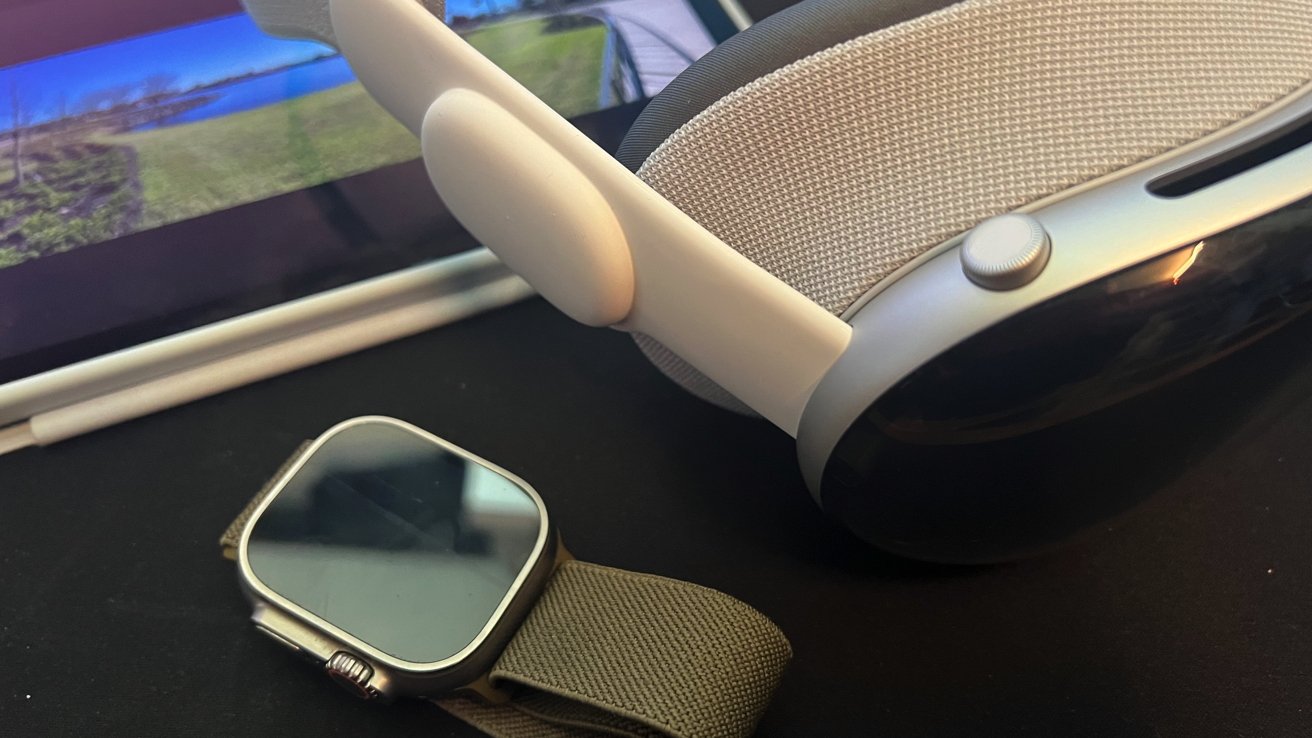
But what is Apple really doing with its immersive headset? Is Vision Pro a big tragic, befuddled mistake like the AI Pin, or is it just the first step in a meticulously planned rollout of the future?
Shock journalists love amping up ordinary things into alarming news. And since Google converted essentially the entire journalism vocation into being little more than interns click baiting for ad views, there sadly isn't much else out there anymore but shock journalism and its bombastic claims that generally end up being nothing burgers.
John Gruber, one of the remaining Walt Mossberg-style pillars-of-calm-reality in the Apple world, on Friday commented on an alarming headline by The Information.
That article claimed "multiple people directly involved in building components for the device" as a source for the hot tip that "Apple has sharply scaled back production of its Vision Pro mixed reality headset since the early summer and could stop making the existing version of the device entirely by year end."Alarming! But wait, is it though?
"A headline like, say Vision Pro Sales Are Exactly in Line With Expectations' is not going to hit people as a big story, but Apple Sharply Scales Back Production of Vision Pro' does," Gruber wrote.
His piece cited a report from last summer that stated, "Sony, the exclusive supplier of the high-resolution OLED displays in Vision Pro, only has the physical capacity to manufacture 900,000 units per year, and with two displays per Vision Pro, that put a maximum capacity on Vision Pro production at about 450,000 headsets for the year," which is right around the number of headsets Apple is supposed to have shipped.
All the hubbub about Apple failing to sell enough, or failing to find interest, or desperately having to drastically scale back its plans --and whatever else they are claiming lately-- seems to fall flat when you compare the number of devices Apple could possibly have built with the number the company is estimated to have sold.
It should also come as no surprise that Apple would not be continuing to build the 2024 Vision Pro forever. It's nearly the end of the year already! My how the time flies. Seems like it was just the Year of Generative AI and now it's deep into the leaves changing in Apple Vision Pro Year One.
If we do a little walk down memory lane, it's almost as if the original Mac, the original iPod, the original iPhone, iPad, Apple Watch-- and most everything else Apple has ever built-- gets quickly replaced with a plus or a 2 or a 3G or whatever other new series identifier the company has used since the beginnings of the tech universe to signify that the new technology is indeed rapidly iterating to get faster, better, cheaper, or fancier every year.
The idea that this is occurring again is not really very alarming.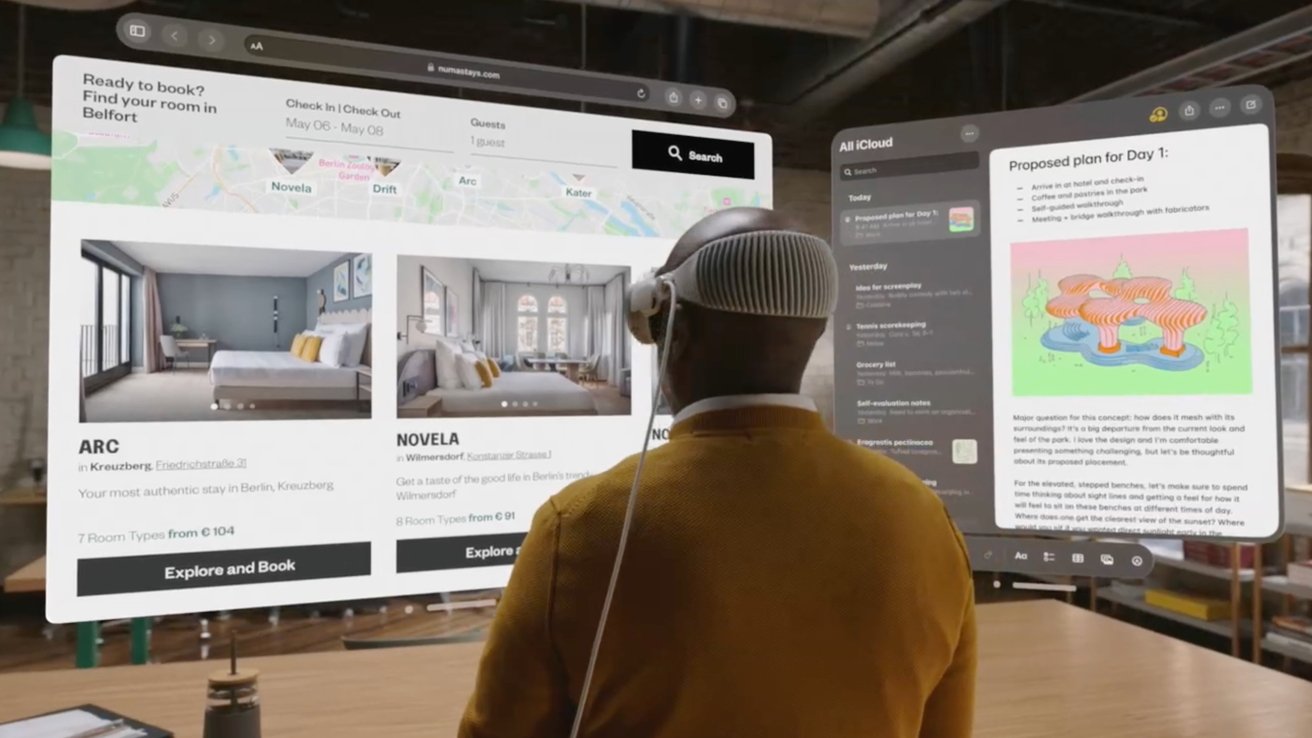
Apple built about as many Vision Pros as it could haveWhat if Apple had started with a cheaper, simpler AVP?
It's pretty uncontroversial to say that Apple Vision Pro aimed at the tip-top of the frothiest peaks in the cream of the market for AR/VR immersive experiences. Was that a mistake?
A lot of people seem to think AVP "should have been" more mass market' in the model of iPod, iPhone, Apple Watch and so on, so that this new luxury was more broadly affordable, and therefore could have resulted in a larger installed base and induced more Spatial Apps and Immersive Video content to use on it.
Imagine if Apple had pushed out a much simpler VR visor that cost a few hundred dollars. What then? Well, we have several examples of that already. Meta has been trying to make that work across five years now, after acquiring Oculus--which itself had been struggling to do the same. Apple even partnered on some level with HTC's Vive to do VR development work on Macs back in the days of iMac Pro's release.
Perhaps Apple carefully surveyed the market in detail, as it is so uniquely good at doing, and specifically decided not to do something that wasn't really working for anyone else.
In fact, we know that's what actually happened because we all watched and saw it happen. Apple's Vision Pro arrived years after the first-to-market piggies went wee-wee-wee all the way home.
If 'going cheaper' was the critical spark that would ignite VR and excite the masses, why didn't Google's humble DIY Cardboard VR blaze a trail rather than fizzling out and being forgotten? Why wasn't the "effectively free" idea of just slapping an Android phone on your face The Thing that launched AR/VR into the stratosphere?
Rather than being a 'me too,' Apple decided to, as it does, follow its own path.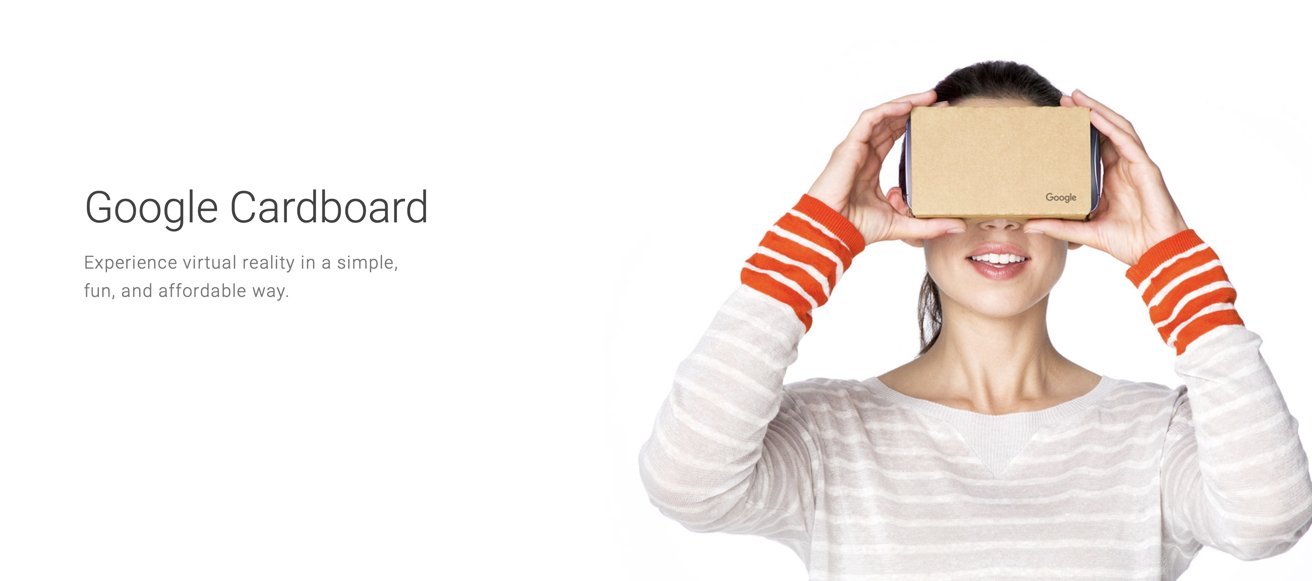
Google Cardboard ended up in the recycling binThe New Take
Retrospectively examining how well Apple's unique takes on PCs, MP3 players, smartphones, wearables, and so on have worked out, it should not be surprising that Apple's slow, considered approach to launching a brand new Spatial platform would involve a completely new approach to the very AR/VR market that has failed to catch on as persistently as 3D TVs have.
Maybe the problem with Immersive Computing was that existing devices were too cheap? That would explain why customers kept leaving their headsets on the shelf shortly after buying them. They just weren't good enough. And to be good enough, they could not be broadly affordable to everyone in Year One.
Apple's demonstration of Vision Pro emphasized key features that were all both spectacular and frighteningly expensive. The resolution for the wearer is spellbinding. The EyeSight display even splurges on showing others a simulation of your eyes, quite a departure from Google's literally paper Cardboard and the various helmets that make you look like you're plugged into the Borg as cheaply as possible, while also stumbling in your own world and visually detached from the here and now.
Apple set a very high price point for Vision Pro to deliver an amazing product, knowing full well that this would price it out of the market for the kind of buyers who can generally afford even a quite-nice iPhone. A phone, a watch, and earbuds are all quite easy for anyone to splurge on. A $4,000 Television of the Future? Not so many.
That was on purpose! Apple knew, as the world's leading expert in launching successful new OS platforms, that it made no sense to try to pursue Spatial Computing on the cheap.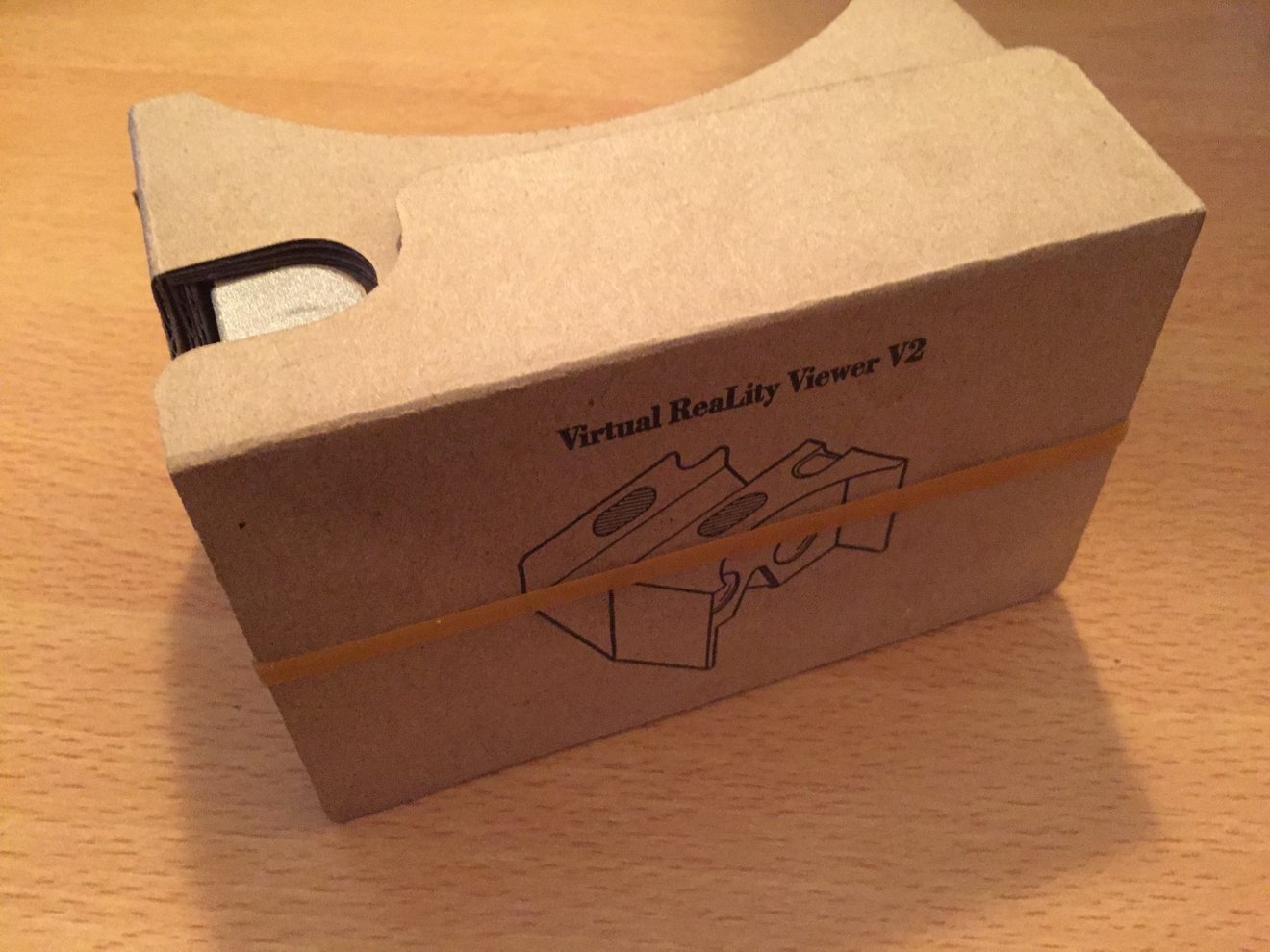
Cardboard looked like something from AmazonA premium at different prices
In fact, The Cheap Android Way pursued by Google and its licensees has achieved the opposite of Apple in virtually everything already: Android tablets have been flopping longer than iPad has been flying. Demand for cheap Android watches have been miserable for longer than Apple Watch has been mesmerizing. Various incantations of Android TV were a minus even before Apple TV turned out to be a plus.
Apple has often but consistently achieved success by being more premium at a higher price. The critics have always bleated about it, but that's the sound sheep always make when things aren't going the way they like.
Apple crafts a premium approach differently for each market. In MP3 players, Apple launched iPod at a price that back in the day seemed absurd and "lame," as one review put it. That was because rather than using a low cost, limited storage flash card, it packed in a fancy compact hard drive and a new-fangled, custom-designed rotating input controller to 'think different.'
It took several years for iPod to grow from a niche premium luxury into the world's most spectacular success ever in consumer tech.
In phones, Apple gobsmacked the market by delivering a 'desktop class computing platform' rather than a handheld, glorified PDA. That came at a premium so much higher than the cheap-o Windows Mobiles of the day that Steve Ballmer famously laughed off the threat because he saw no way, now how that Apple could gain significant market share in mobiles at that high of a price point when most phones were virtually free with a service subscription.
Again, it took several years before iPhone transitioned from a luxury phone to something everyone carries, unless they have no credit at all and forgot to save anything for later.
In tablets, Apple could take its existing technology and deliver iPad as a much better alternative to the status quo at a very competitive price. That wasn't a big departure in strategy; it was just due to the fact that a light duty iPad didn't have to cost a lot just present the web, email, games and other iOS apps on a larger screen.
iPad, unlike other platform launches of the Steve Jobs era, was effectively an instant hit, wiping out all competition in the first year and maintaining a commanding lead in tablets ever since. Certainly its affordability helped it attain that level of success faster, but that was again due to the fact that tablets were relatively cheap for Apple to design and build.
Not so with Vision Pro. It's expensive because it's chock full of really high-end everything, from its displays to its custom processors, cameras, and sensors. It was quite obvious that Vision Pro wasn't going to fly off shelves at its high price. But there was a limit to how much Apple could scale it down before it got not-good-enough for anyone.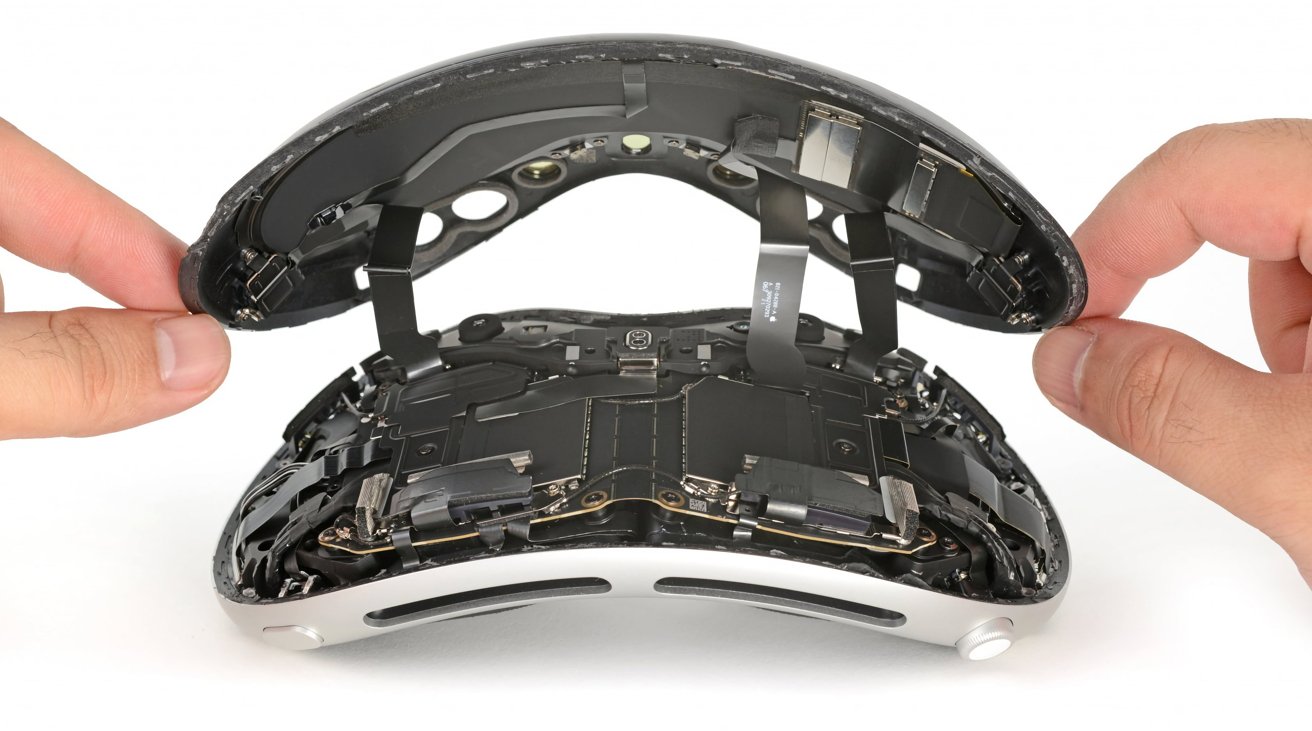
Chips ahoy
After the flops of Windows Phone and Surface, Balmer's successor at Microsoft, Satya Nadella, took cues from Apple to launch his first big hardware product HoloLens as a comparatively expensive $3,000 premium prototype aimed only at developers and the Enterprise.
It wasn't a hit but the sheep cut him a lot of slack. The idea that AR/VR wouldn't work on the cheap wasn't original to Apple, simply because it was quite obvious to anyone looking at the technology landscape. Cheap AR/VR literally makes you sick.
Even Google Glass took a stab at relatively lofty pricing, without any delusion that AR/VR could be subsidized solely by advertising and tracking. Starting at $1,500, Glass cost too much for a toy but the thing wasn't compelling enough to be anything but a toy.
Again, for some reason the sheep largely bit their tongues-- throughout the era of hijinks and Glassholes-- and took a wait-and-see approach right up until Google officially terminated its half-assed basic prototype.
Isn't it interesting that the sheep won't call anything from Google, Microsoft, and Facebook a flop until it's completely, officially toast, but won't acknowledge anything from Apple as even 'suitably sufficient' until it rivals the iPhone in glorious success?The high price of futurism
By aiming high-- and delivering high-- Apple could pique the attention of people with disposable incomes that haven't been so enthralled with all the AR/VR that has come before. But there's more than just expensive hardware in the Vision Pro platform.
Another component of Spatial Computing that's really, inherently, stubbornly expensive is its software. Building apps for iOS and iPad and Apple Watch is already quite an undertaking financially for developers. Building a good app easily costs $100,000's. But the large installed base of iPhone, iPad, and Watches drives volume sales.
The Catch 22 of an expensive platform device is that there are fewer users to subsidize the development of Spatial apps. A generation or two ago, LaserDisc offered a huge jump in fidelity over basic video tape, but the high price of players required movies on LaserDisc to generally be 'priced for rental' rather than affordable to many home collectors to purchase outright.
Given that the installed base of Vision Pro is ballparked at around half a million, it's a tough sell for Apple to prod developers to spend tons of money doing the work to support Spatial Computing unless there's a compelling business model. If it's not a high-volume audience, it has to be a high-value audience, and the ultra high-end of the market is certainly that.
People with funds weren't very curious about HoloLens or Glass. But Vision Pro? Apple is positioning it as the ultimate experience for people who can afford it, among its already premium installed base of iPhone and Mac users. Recall Apple Watch and AirPods debuted in a similar way.
Beyond Spatial apps, the other software that's inherently expensive to create is Apple Immersive Video. Making what I called the future of television not only requires very high resolution cameras and lenses (two of them!), but also requires filmmakers to totally rethink how they shoot content.
It's also all the more expensive to edit and deliver, simply by way of the fact that it involves much more data. The sharper and higher resolution content is also less forgiving. The price of everything involved with conceiving, creating, and collating Apple Immersive Video is spectacular, and there isn't an easy way to recover that expense simply by charging a lot per download.
Apple's entire strategy with Apple TV+ gives the impression that the company didn't embark on delivering high quality films and new series just to lose a lot of money being an artist. Apple created its own media pipeline for understanding how to deliver compelling content you might want to enjoy privately on a flight, or on a massively large, virtual display at home.
Nobody wants to watch Netflix shovelware or YouTube podcasts in an immersive, cinematic cocoon. But Avatar or Mad Max in 3D? How about Apple's own spectacular Foundation or Masters of the Air? Apple lined up unique rights to the former and bankrolled the latter's creation itself.
An immersive screen demands immersive content
Saddled with the apparently impossible dilemma of creating affordable immersive software content for its inherently limited initial installed base of Vision Pro users, Apple fixed things in part the LaserDisc way: 3D movies are priced to rent. Additionally, Apple also created a solution that didn't exist in the LaserDisc era: a subscription service to its own bespoke Apple TV+ creations, which look spectacular on a massive screen.
People with money now have something dazzling to pay for. They can coddle the emerging sprout of Apple's Spatial Computing platform until hardware prices can come down enough to entice the broader market. Until then, Vision Pro is reserved for commercial developers and the well-heeled, out of necessity. It simply couldn't sustain itself at a lower price point because there'd be no point.
As Android has repeatedly proven, if you aim too low-- in price and therefore value-- you hit nothing.This all happened before
Perhaps the best example of Apple approaching a catch-22 problem with rarified hardware at stupid prices is MacBook Air. Steve Jobs first introduced the envelope-sized machine in 2008 as the thinnest notebook ever, just 1.9 cm. However, it wasn't just light and thin.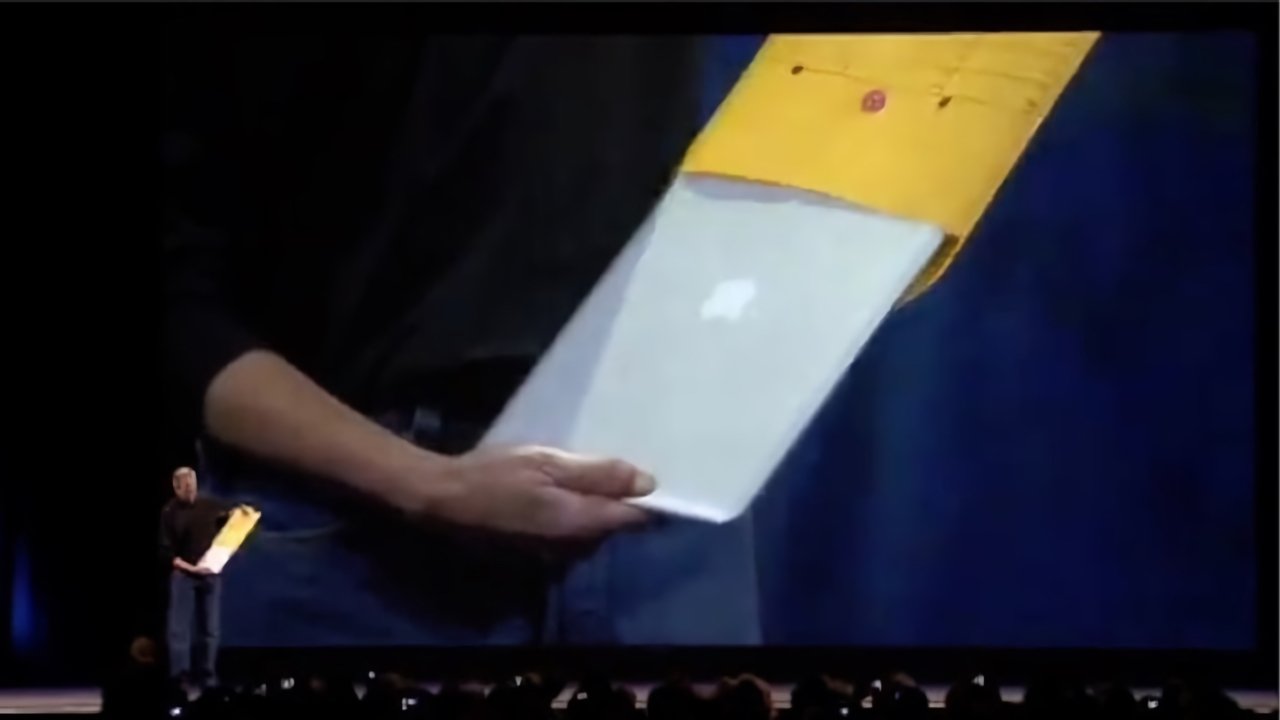
MacBook Air was light, thin, and expensive.
It was expensive. A big part of why it was so pricey was that to help it achieve its thinness, it used a solid state drive, meaning that instead of a spinning mechanical hard disk, it read and wrote storage to memory chips. At its debut, people complained that it could have been more affordable if Apple had at least offered a spinning hard drive version, or given up on the absolute thinness and instead just made a basic PC notebook with an Apple logo on it.
Across many years, pundits and critics have wailed about Apple's fascination with light and thin, insisting that "everyone knows" that what everyone really wanted was a beefy laptop with cheap disk options and a big screen. MacBook Air was none of those things, and certainly wasn't cheaply affordable to many.
Yet all these years later, beefy notebooks have only found their niche as gaming platforms and everyone else has gravitated to the biggest eclipse to occur in portable computing. The reason: Apple wasn't trying to make a cheap device, it was trying to make a better one.
Back in 2008, a solid state disk was super premium. Today it's effectively necessary. In between was a lot of competitive advancement that drilled the costs and prices down. Jobs' vision for a light, thin MacBook Air was broadly reviled as impractical and limited, but the reality is that once you hit 40, or perhaps even 30, you start to appreciate that the weight of your laptop has a big impact on how much your back hurts.
A lot of the writers with the free time to share their opinions haven't lived long enough to know what people who have earned money actually want.
With the debut of MacBook Air, notebooks got thinner and more SSD-sophisticated-- which required not just new hardware but new OS level software. Apple blazed the trail, fearless of higher pricing, knowing that early adopters would pay more for something better.
MacBook Air sales didn't explode in Year One. But a few years after they did, everyone else started copying. And that provides a key insight into why Apple shamelessly debuted Vision Pro with crazy specifications, regardless of its price. Apple knows how things are built and where prices are heading.All about the base
Apple also knows that it will be critical to not just attract a large installed base for Spatial Computing, but also one that is commercially relevant. Google could probably have, at one time, counted every download of Cardboard interest and crowned itself the king of VR.
But such metrics are meaningless because Google didn't do the work to create compelling software or services that could keep VR alive. It seems clear that nobody could have attracted enough attention to make everything from 3D movies to immersive video and spatial apps, if they were hobbled by the inferiority commensurate with a $300 VR rig. Perhaps not even for a better one costing $1,500.
The agitation drums are trying to bang out a baseline that suggests Vision Pro is over and has already failed, but the reality is that people bought it and content is slowly becoming available. The cost and other barriers to delivering new, desirable immersive content create the reality that there will simply be an initial dribble, at least at first.
Apple, as a deep pocketed content factory and subscription service, can maintain that trickle of content until enough of it collects to make a compelling case for buying a Vision Pro, or whatever comes next. Vision Air?This all happened before, as well
Just like MacBook Air in hardware, Apple has already achieved long term successes in software and services. Remember back to the days of the first Video iPod? Apple's initial collaboration with Disney to stream postage-sized videos of a very few TV shows in iTunes was initially scoffed at. But that library eventually, then quickly, grew.
Apple's first launch of Movies in the iTunes Store was also initially sparse. Things changed. Today, you can watch virtually anything on your TV with an Apple TV box, using Apple's services or one of its streaming partners. That also means you have huge libraries of high quality content on Vision Pro as well.
Apple's first year of apps on iPhone were limited to its own bundled Mail, Safari, Maps, and so on. A year later, the initial third party developer apps were things like pretending to drink a beer, simple games, and a lot of fart apps. Yet given some time, the App Store became a treasure of appealing, powerful content that changed the way we work.
Today, Apple Immersive content is pretty limited. The company has several teams working on delivering adventure, animals, sports and travel series, and has crated a Spatial Apps platform for its iOS and iPad developers. It's even delivered its first example of an immersive short film with Submerged, a 17 minute story that feels a lot longer and involving than the running time might suggest.
Submerged invites viewers onto a WWII-era submarine and follows its crew as they wrestle to combat a dangerous new threat.The future is coming
It will take time for Apple Immersive to arrive at scale, just like it did for iTunes and the App Store. Years even.
Don't fall for the clickbait sheepish bleating that demands more hay today. Sheep never imagine nor usher in a glorious future; they only stare at each others' rear ends while standing in line for the trough and making their concerned sounds of limited importance.
Apple isn't moving as slowly as these lambs might imagine. And it's not going to run out of money while selling virtually all the world's premium gear in every other segment.
When a more affordable Vision becomes achievable, Apple will have a portfolio of content to use on it. And the sheep will be bleating about something else, as they do.
Read on AppleInsider


